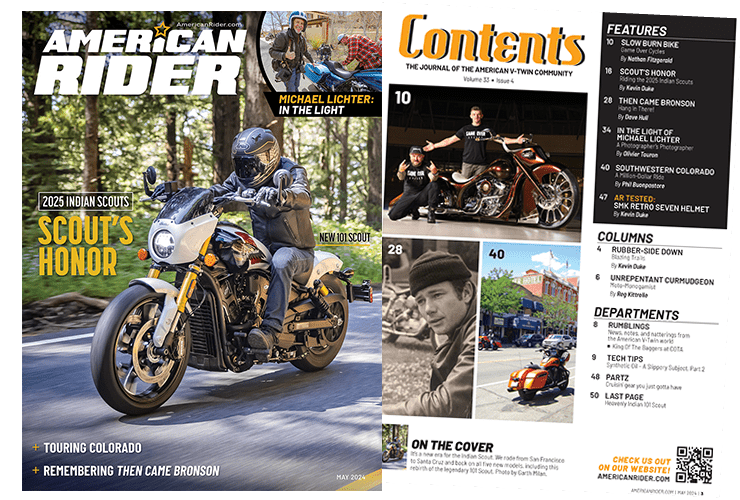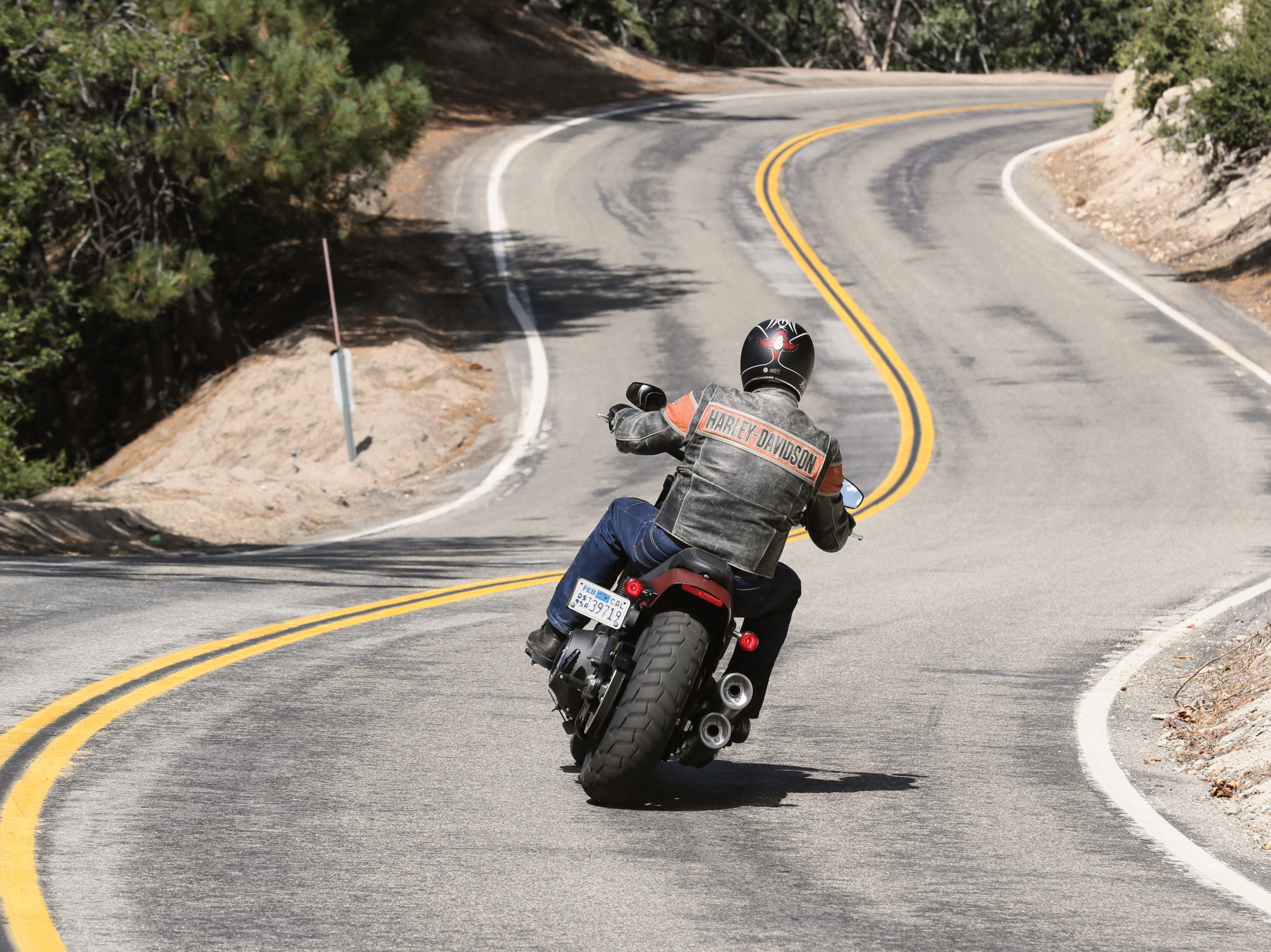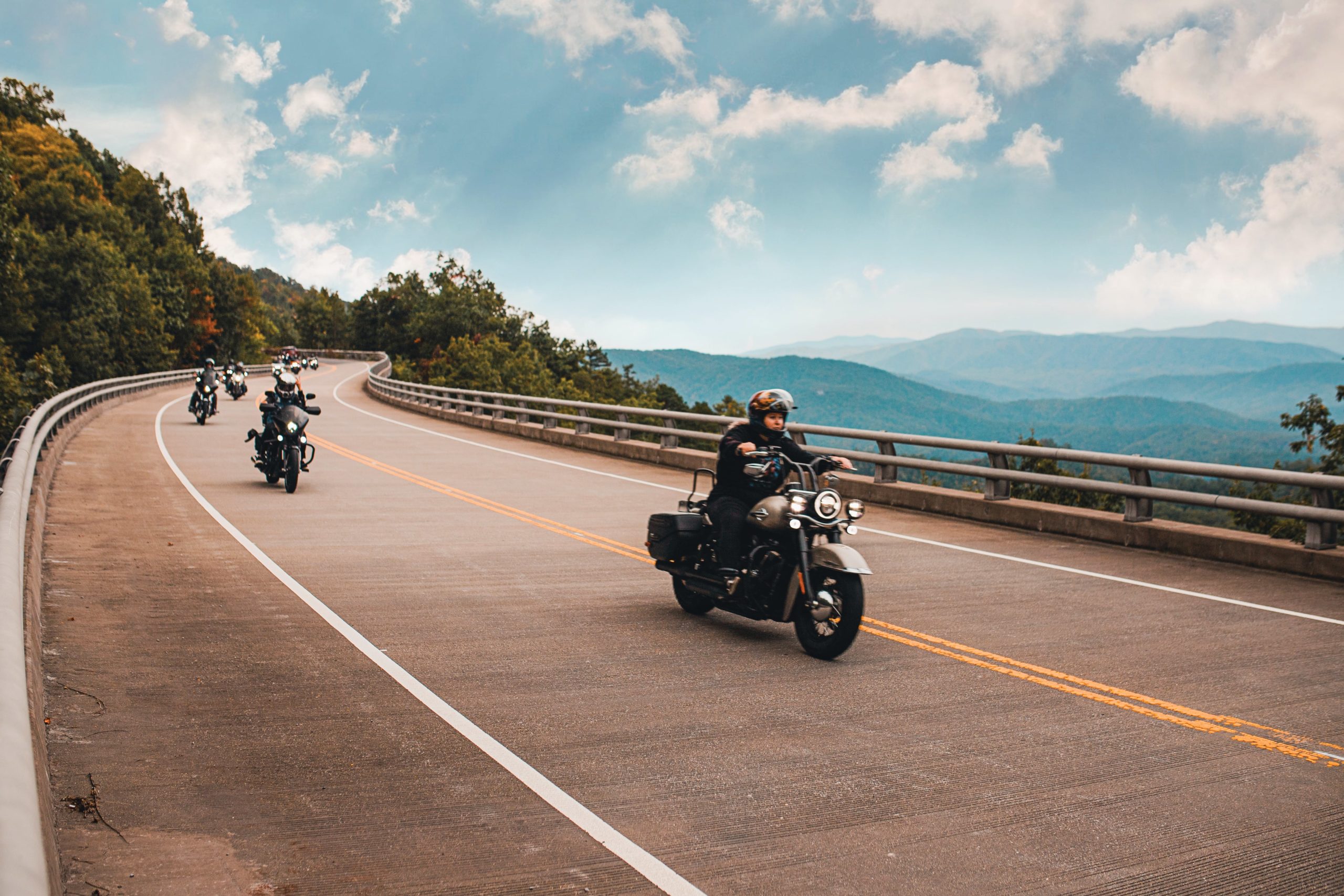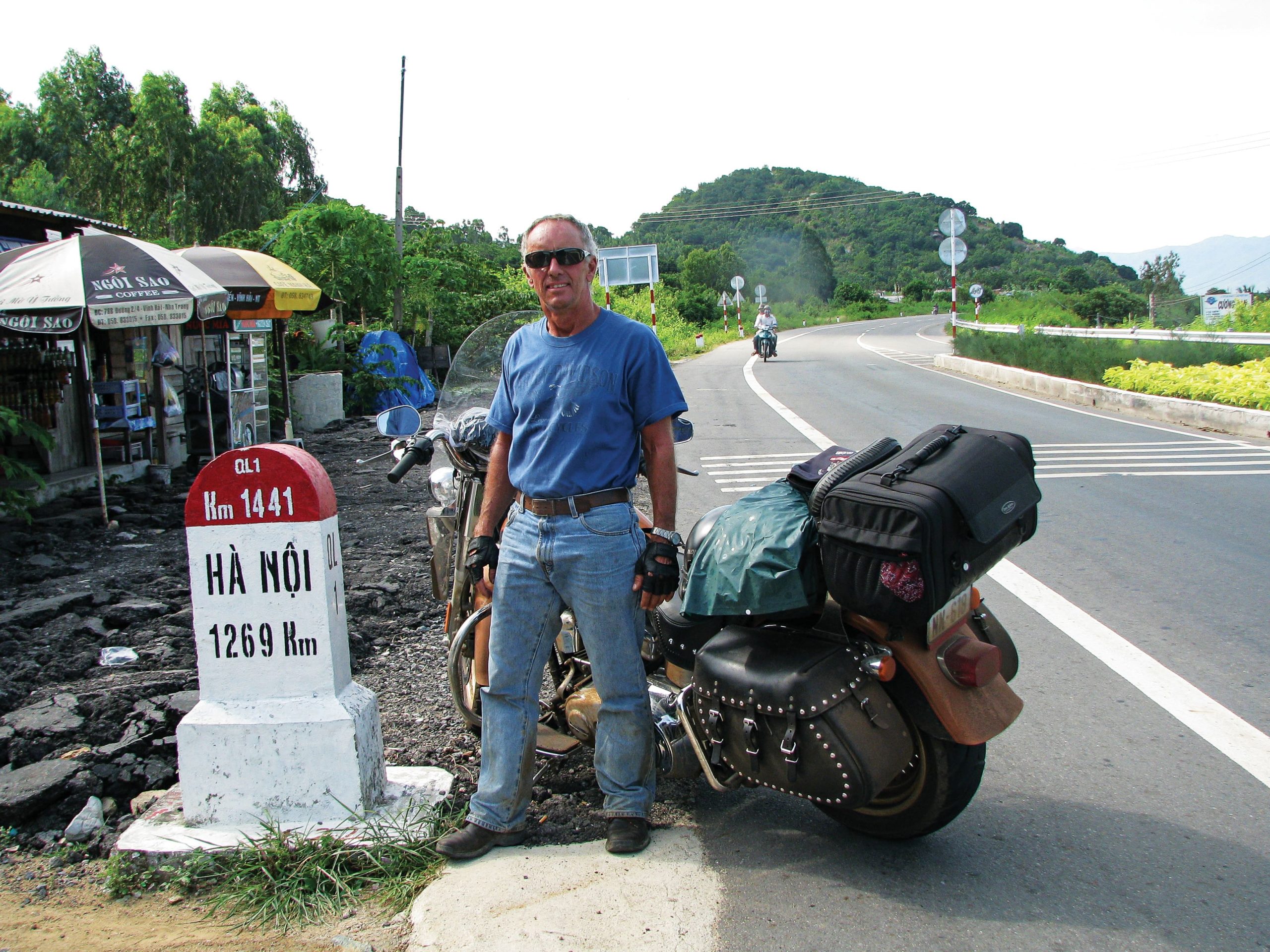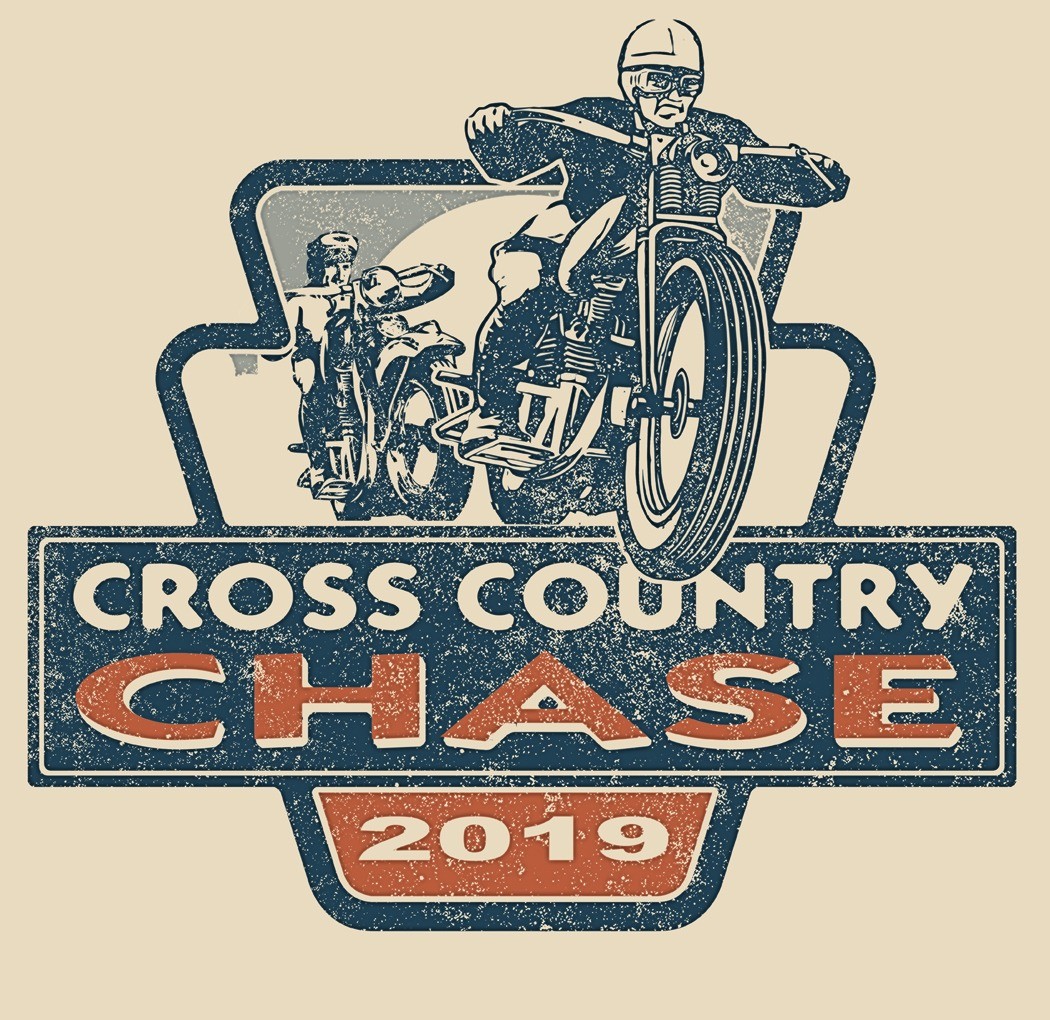King of the stuntmen
The H-D Museum pays tribute to America’s favorite daredevil
Milwaukee, Wis., July 8—This year is the 35th anniversary of Evel Knievel’s failed Wembley Stadium jump in London on May 26, 1975, when he cleared 13 busses, crashed on the landing, and declared to 90,000 spectators, “I will never jump again.” He returned for two more jumps, making his last appearance with his son Robbie in March of 1981 in Hollywood, Florida. Knievel died on November 30, 2007, of pulmonary fibrosis, a lung disease.
I was invited to a media-day tour for a sneak preview of the “True Evel” exhibit at the Harley-Davidson Museum and was highly impressed with the quality and quantity of the items on display. Our tour guides for the preview were Bill Davidson, who became a personal friend of Evel and his family and had plenty of stories to relate to us during the tour, and Jim Fricke, the Harley-Davidson Museum’s curatorial director.
The 10,000-square-foot exhibit is located across from the museum in the archives building, and showcases Knievel’s life from his childhood in Butte, Montana, through his reign as King of the Stuntmen. The exhibit will run at the museum until September 6, 2010. Admission to the exhibit is included in the price of regular museum admission, but to further honor Evel, visitors to the museum who have a cast or stitches will receive a discount on their admission price.
The exhibit consists of roughly 400 items, many on loan from Evel’s son Kelley Knievel. Mike Bundy of California and at least 10 other collectors also contributed. The museum staff chose the items for the exhibit over thousands that were offered, selecting the ones that give visitors the best story of Evel’s life.
Upon entering the exhibit you are greeted with original daredevil posters from the 1920s through the ’50s to help set the mood. The exhibit smoothly transitions into his career from the early years, when he got his start jumping a caged mountain lion and rattlesnakes at his motorcycle shop in Moses Lake, Washington, through his transformation into one of the world’s larger-than-life showmen.
The walls were the perfect showcase for a series of paintings done by Michael Godard, who collaborated with the Knievel family to ensure that the paintings are historically correct. On display is Knievel’s original blue leather riding suit from his failed Wembley Stadium jump, and his red, white and blue signature leather suit with cape and diamond studded cane complete with the original bill of sale. Plenty of diamond-studded jewelry and a few of his fur coats are also on display. The walls and cases are full of personal photographs and letters, as well as contracts and agreements for many of his jumps.
Visitors can view a set of four original x-rays showing the placement of plates and screws in his legs, shoulder, arms, hands and neck that held his body together. A skeleton is also on display that Knievel personally marked off, showing the location of each and every one of the Guinness-record 39 broken bones.
The main area of the exhibit holds his twin-engine J-44 jet-powered trike, the Snake River Canyon X-2 “Skycycle,” and a couple of his XR-750s, including the one he used to jump the shark tank in Chicago. A few of his engines and information on his machinery, with original bills of sale from his tuner Roger Reiman, as well as a video loop of his life and jumps is also displayed.
The last part of the exhibit includes original Evel video games, pinball tables and a few slot machines. These were running and visitors are able to play them. There were hundreds of collectable toys and memorabilia that showed just how marketable he was. Also on display is his autographed 100th Anniversary Road King.
To do it properly, getting through the exhibit should take about two hours, as you’ll want to examine many of the documents on display. For instance, there’s an H-D inter-office memo dated July 26, 1978, from Clyde Fessler to John Wilson, to the effect that Evel was representing Harley-Davidson without a contract and Fessler wanted to know why the Motor Company was still paying him without a valid contract. In return, Wilson’s memo stated that the company didn’t want to start any adverse feedback or negative publicity, with a P.S. stating, “We are fully aware that there is no signed contract.” Fessler later sent out another memo to the marketing department that said, “Let’s let this die a natural death—hopefully in ’79. Do not push for a signature on a contract.”
One item I found particularly interesting was “Knievel in a Haystack;” a training manual for life support team members that was subtitled “Operation Giant Step.” I snuck away and went back and carefully opened the book, which was about 200 pages of first aid procedures to be followed in case of a crash.
Media day was set on a Thursday, and it was Bike Night at the museum. I would estimate over a thousand motorcycles come to Bike Night during the summer. There is food, beer, music and plenty of antique as well as custom motorcycles. More motorcycles can be found across the bridge at the Iron Horse Hotel, which is a block away and has plenty of parking and an outdoor patio bar with music and ample seating for everyone.
I want to thank everyone involved for making my time in Milwaukee an enjoyable one, especially Erin Nevicosi at Buzz Monkeys PR Firm for coordinating my visit to the museum and hosting the media-day tour. Thanks also to Iron Horse Hotel owner Tim Dixon, and Brigette Breitenbach, hotel PR, for stopping by at breakfast and saying hello, and the rest of the staff for a wonderful experience.
This exhibit is the first large temporary exhibit the museum is hosting, and they plan to have a new temporary exhibit every summer. Damn, I love Milwaukee!

